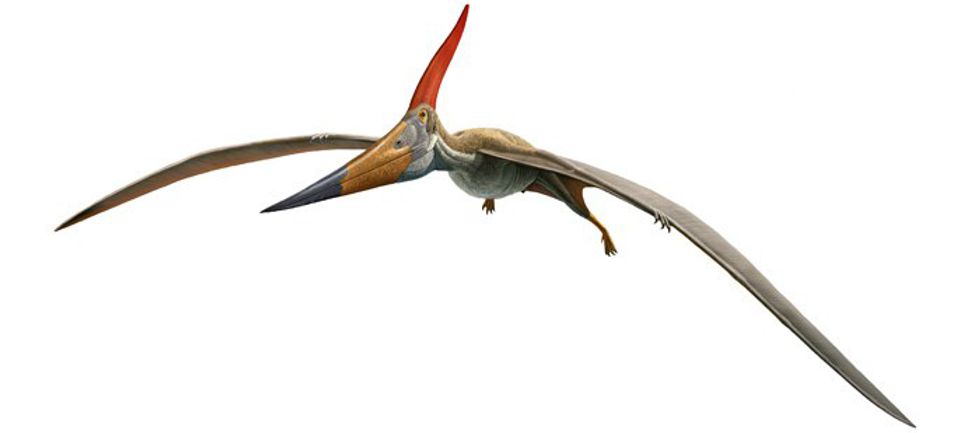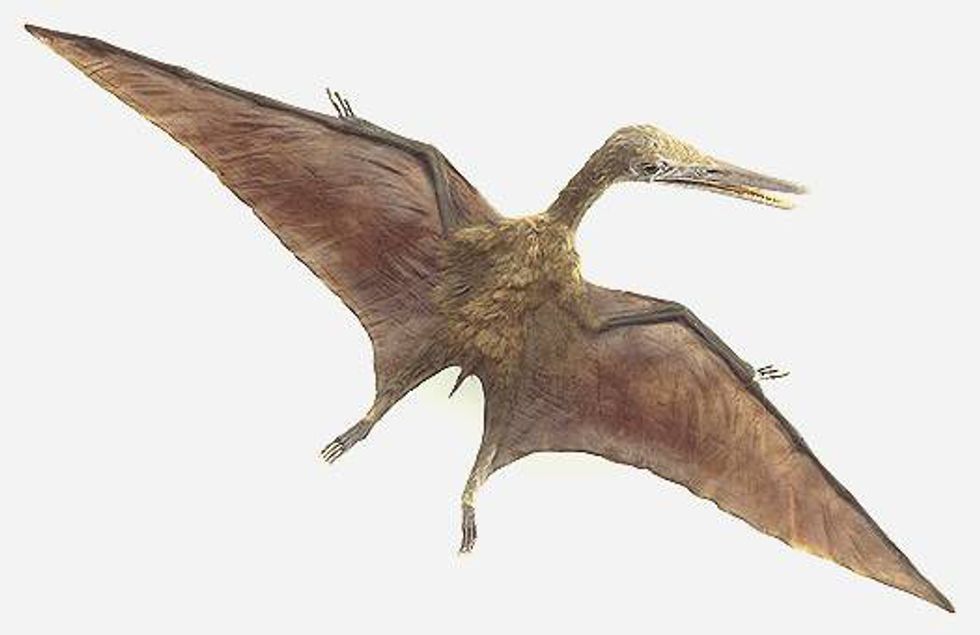Close your eyes and imagine dinosaurs. Now, think of the flying dinosaurs. They have large beaks and giant wings. They swoop and fly, and grab large fish right out of the water. Now what are the names of these most-impressive creatures, what is the species name? It starts with a silent "P" and it's on the tip of your tongue. Yes there it is, the name. They are "pterodactyls." Actually no they are not.
Allow me to clarify this blunder on your part as for some or many, I ruin your '90s-kid childhood as all you know in the way of flying dinosaurs, known as pterosaurs, comes crashing down. Let's begin.
Popularized in the '90s, dinosaurs and paleontology were just about the coolest things out there. A close second was probably "Jett Jackson" and "The Jersey," some of the best Disney television shows ever made, but dinosaurs reigned supreme. Stemming from an intense fascination with the future and outer space thanks to things like "Star Wars," eventually people began to wonder about what came before – this came to dinosaurs. The largest jump in the popularity of dinosaurs in the '90s no doubt came from the film "Jurassic Park." This single movie led thousands of children across the globe to think they could actually go and be paid to find dinosaurs. Sadly, this profession by the turn of the century proved to be failing and to this day is not very lucrative. However, to anyone fulfilling this dream of theirs or wanting to do this, I encourage you to do so, so I may be able to learn about new dinosaurs. Following "Jurassic Park," "The Land Before Time" also staked its claim and brought dinosaurs to an even younger crowd. By this time, dinosaurs had sealed their claim and became an idea and cornerstone of what made the '90s so incredible to so many.
So where in this do pterosaurs come in at? Well let's shift focus and attack it head on. Personally, I do not know where the idea came from that the pterodactyl was either the most-common or most-recognizable flying dinosaur. Looking back at several '90s things that reference pterosaurs, nothing leads me to believe in people misnaming an entire order of animals based off one finite thing.
With this all now being said, here comes the point at which I crush your nostalgia:
First things first, if and when you think of a flying dinosaur and this images flashes in your head:
You think, "Oh, this a pterodactyl." YOU ARE INCORRECT. This fine creature has little in common with pterodactyls, in fact this is in actuality, a pteranodon. Notice the large crest on the back of its head, a feature distinct to that of pteranodons. Now that you have properly been educated, I am sure you are now wondering what in the world a pterodactyl is. Well, first off, pterodactyl is not even a widely used term. It is a generalized term used by everyone but scientists to group pterosaurs togethers, because I guess pterosaurs is too hard to say. Pterodactyl spawns from the type of pterosaur, pterodactylus, and well here is an image of a pterodactylus.
Again, notice the head: no large bony crest, the most observable difference in these two animals, between it and pteranodons. According to certain outlets, there is still only believed to be only one species of pterodactylus in known existence. However, there are countless species of pteranodons that have been found.
To close, it is about time I told you, pterosaurs are not considered dinosaurs at all. Instead in the scientific world they are considered flying reptiles which differs from dinosaurs in several ways. And to clarify also, birds did not evolve from these flying reptiles; that is yet another misconception.
There are countless more things I could spend hours divulging and going into on the subject matter, but I will allow you the enjoyment of learning about these miraculous creatures that once graced the skies of our world.
From here on out, I am glad another person now knows the differences in flying reptiles and will hopefully refrain from misnaming these beautiful creatures.




















